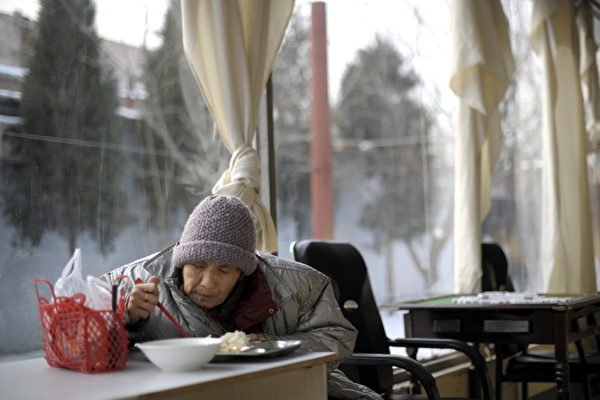Over the past nearly 20 years, the number and proportion of elderly people in China have doubled, reaching 310 million. In the future, there will be a net increase of 10 million elderly people annually, leading China into a heavily aged society. The phenomenon of “aging before becoming wealthy” in China is putting immense pressure on the pension system.
According to the recent “2024 National Economic and Social Development Statistical Bulletin” issued by the Communist Party of China, there are 310 million people aged 60 and above, with 220 million aged 65 and above, accounting for 22% and 15.6% of the total population, respectively.
At the “China Development Senior Forum 2025 Annual Conference” on March 23, Tang Chengpei, Vice Minister of Civil Affairs of China, stated that China has the largest elderly population in the world, aging at the fastest rate, and facing the most challenging task in addressing population aging.
He revealed that in the next 10 years, the number of elderly people aged 60 and above in China will increase by over 10 million each year.
The World Health Organization (WHO), some Western developed countries, and China all define the elderly population as those aged 60 and above.
Looking at the data, over the past two decades, the elderly population in China has doubled, increasing from 149 million in 2006 to 310 million in 2024, with the proportion in the total population rising from 1.49% to 22%.
Tang Chengpei believes that population aging is accompanied by significant trends such as negative population growth, declining birth rates, and regional population differentials. The scale and proportion of the disabled elderly and empty-nest elderly are increasing, leading to a rise in the elderly dependency ratio.
The elderly dependency ratio is the percentage of the elderly population to the working-age population in a country.
According to international practice, when the proportion of people aged 60 and above exceeds 10% or 65 and above exceeds 7% in a country, it is considered an “aging” society. If the proportion of the population aged 65 and above reaches 14% to 21% of the total population, it is termed as moderately aged, while over 21% is heavily aged.
According to the “2021 National Economic and Social Development Report” released by the Communist Party of China, the proportion of people aged 65 and above in China exceeded 14.2% for the first time, marking the entry into a moderately aged society.
Yuan Xin, Professor at the School of Economics at Nankai University and Vice President of the China Population Association, stated that from 2022 to 2035, the growth rate of people aged 60 and above in China will remain high, and by around 2035, the total elderly population will surpass 400 million, with an aging level exceeding 30%.
In its report in December 2024, “First Finance” indicated that after 2030, the elderly dependency ratio in China will rapidly increase. According to projections, the elderly dependency ratio may reach 36.3% in 2035, 53.5% in 2050, and peak at 87.5% in 2084.
In a study published in January 2024 in the “Fudan Journal” (Social Science Edition), it was forecasted that by 2035, the shortfall in China’s pension contributions would amount to a staggering 30 trillion yuan if investment returns were not taken into account. Some believe that the pension deficit is essentially hidden debt.
David Dollar, a senior research fellow in Chinese economics at the Brookings Institution, once told BBC Chinese that aging is like a chronic disease for an economy, where the proportion of productive working-age individuals shrinks while the demand for support for the elderly increases, leading to an expanding pension deficit and a heavy social burden. Young people, already struggling to support themselves, are increasingly reluctant to have children, and combined with the elderly’s reluctance to consume, the economy’s vitality weakens, plunging society into a vicious cycle.
“First Finance” reported that China’s pension deficit pressure has reached a critical point. According to statistics from the “Development Statistics Bulletin of Human Resources and Social Security Undertakings” and the “China Finance Yearbook,” by 2019, the shortfall in the urban employee basic pension insurance fund had reached 971.3 billion yuan, with corresponding fiscal subsidies totaling a high 1.0319 trillion yuan that year.
The China Insurance Association pointed out in 2020 that from 2025 to 2030, China’s pension deficit is expected to be between 8 trillion yuan and 10 trillion yuan. According to the “China Pension Actuarial Report 2019-2050” released by the Chinese Academy of Social Sciences in 2019, the basic pension insurance for enterprise employees nationwide is expected to “balance” by 2035.
Yuan Xin stated, “The current major judgment is that by around 2030, the national pension fund will transition from surplus to deficit, meaning ‘insufficient revenue to cover expenses.'”
Anbang Think Tank told BBC Chinese that what makes China’s aging issue more troublesome than in developed countries is that China is entering aging at the stage of a developing economy, often referred to as “aging before becoming wealthy.” Due to insufficient wealth accumulation by the country and society, an inadequate social security system, and insufficient preparation for the arrival of an aging society.

